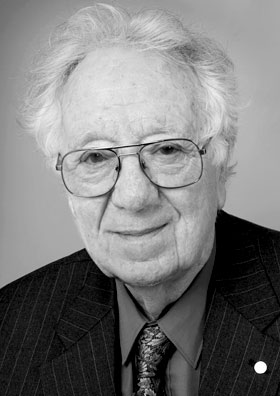Oliver Smithies (Oliver Smithies)

Oliver Smithies was awarded a Commonwealth Fund fellowship to take up a post-doctoral position in the United States, in the laboratory of J. W. Williams at the University of Wisconsin–Madison’s Department of Chemistry. A problem with acquiring a U.S. visa, due to a condition of the Commonwealth Fund fellowship, then forced him to leave the U.S. From 1953 to 1960, he worked as an associate research faculty member, under insulin researcher David A. Scott, in the Connaught Medical Research Laboratory at the University of Toronto in Canada. He learned medical genetics from Norma Ford Walker at the Hospital for Sick Children in Toronto. In 1960, Oliver Smithies returned to the University of Wisconsin–Madison, where he worked in the Department of Genetics until 1988 as, successively, assistant, associate and Leon J. Cole and Hilldale Professor of Genetics and Medical Genetics. Subsequently he was the Excellence Professor of Pathology and Laboratory Medicine at the University of North Carolina at Chapel Hill. He continued to work in his lab there daily into his eighties. He co-authored a total of more than 350 research papers and reviews, dating from 1948 to 2016.
Oliver Smithies developed the technique of gel electrophoresis using a starch matrix, as a sideline of (unproductive) research into an insulin precursor molecule, at the University of Toronto. This improved the ability to resolve proteins by electrophoresis. He was assisted technically in his later electrophoresis work by Otto Hiller. He used starch electrophoresis to reveal differences between normal human plasma proteins, and in collaboration with Norma Ford Walker, showed that the variation was inherited, which stimulated his interest in genetics. While at the University of Wisconsin in the 1980s, Smithies developed gene targeting in mice, a method of replacing single mouse genes using homologous recombination. Mario Capecchi also developed the technique independently. This research is the basis of methods used worldwide to investigate the role of particular genes in a wide range of human diseases including cancer, cystic fibrosis and diabetes. In 2002, Smithies worked with his wife, Nobuyo Maeda, studying high blood pressure using genetically altered mice. Oliver Smithies died on 10 January 2017 at the age of 91.
Born
- June, 23, 1925
- United Kingdom
- Halifax, West Yorkshire, England
Died
- January, 10, 2017
- USA
- Chapel Hill, North Carolina



